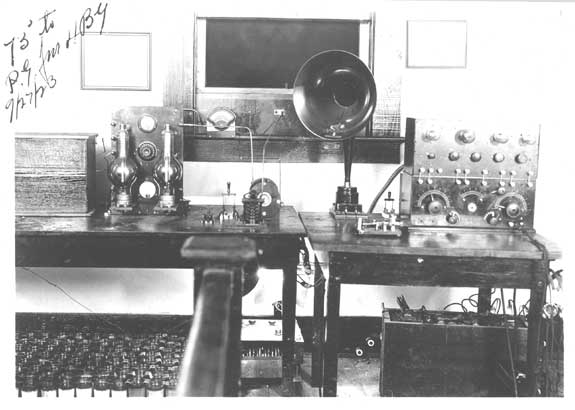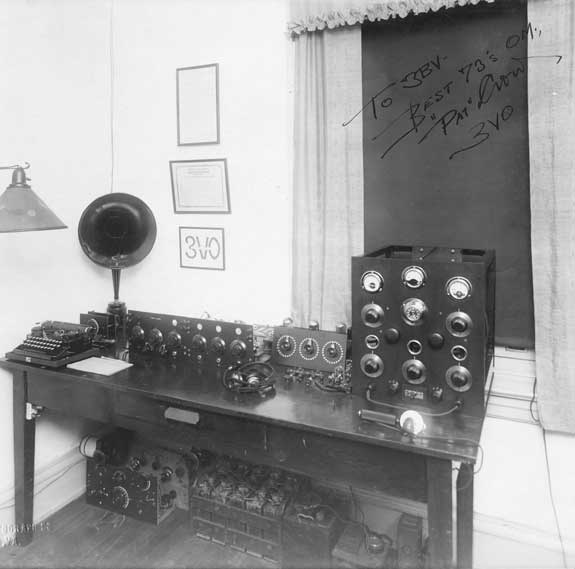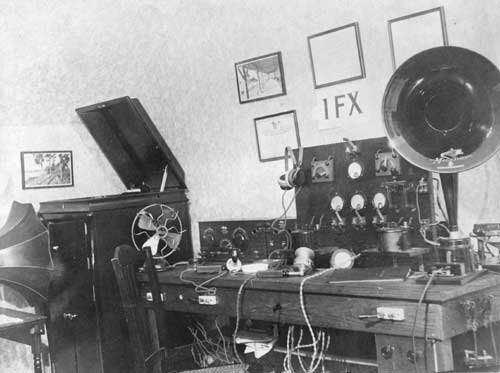|
Early Ham Radio Photographs-Page 1 |
||
| The above photo shows the
early 1920's amateur radio station of "3VO", a.k.a. Pat
Crow, according to the inscription in the upper right corner.
Most of the equipment appears to be homebrew. The receiver is almost certainly a regenerative detector followed by three audio amplifier stages as needed to drive the Magnavox R-3 horn speaker. At the right is the transmitter, with hand-held carbon microphone (probably Magnavox) on the table in front of it. The device with the three switches and tubes between the transmitter and receiver is of unknown purpose. A Vibroplex "bug" and two straight keys and a pair of headphones are also visible. Under the table are several wet cell batteries, and chargers, as well as some discarded equipment. Click on the photo, or here for a larger view of the equipment shown above. |
||
| This station belonged to 1FX,
and is dated Dec. 1922 on the back of the photo. The receiver
appears to be a Grebe CR-5 with a matching RORK two-stage amplifier.
The horn speaker is a Magnavox R3, and the transmitter is obviously
homebrew. There are two microphones visible. One is a Magnavox
(right), and the other I can't identify (left). At the far right is
a Murdock antenna switch. Two phonographs are partially visible,
which would indicate that the owner was playing records on the air.
At the time, there was not much distinction between a ham station such as
this, and a actual "broadcast" station.
Click on the photo, or here for a larger view of the equipment shown above. |
||
 |
||
| This was the station of 4BY as
it appeared in 1923. At the left is the transmitter. Very
prominent are a pair of UV-204 tubes which would have given the
transmitter CW capability to about 500 watts. It was very much state
of the art for the time. The box to the left of the transmitter may
contain transformers which would be part of the power supply for the
transmitter. A Vibroplex semi-automatic key is visible in front of
the Magnavox horn speaker.
The receiver is at the far right. It consists of a separate tuner (bottom unit) and detector/amplifier (top unit). The tuner was made by the Chicago Radio Laboratories (the predecessor of Zenith) model RA-6, though it has been extensively modified. The detector/amplifier unit is unidentified. While it is impossible to tell the tube types, one is significantly bigger than the others, and may be a UV-202. This would have been used to drive the speaker. Under the table at the left is an array of what are probably chemical rectifiers used as part of the power supply for the transmitter. At the right would appear to be a large storage battery, probably for filament power. Click on the photo, or here for a larger view of the equipment shown above. |

